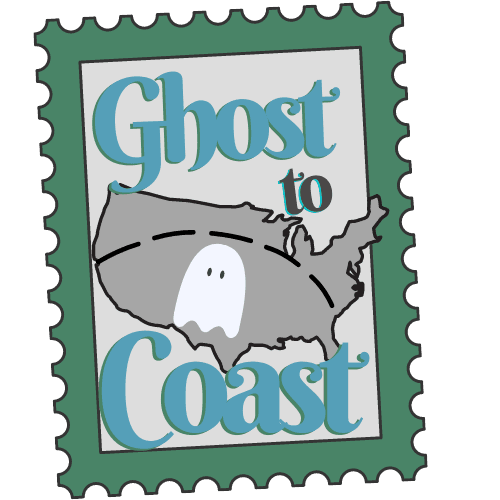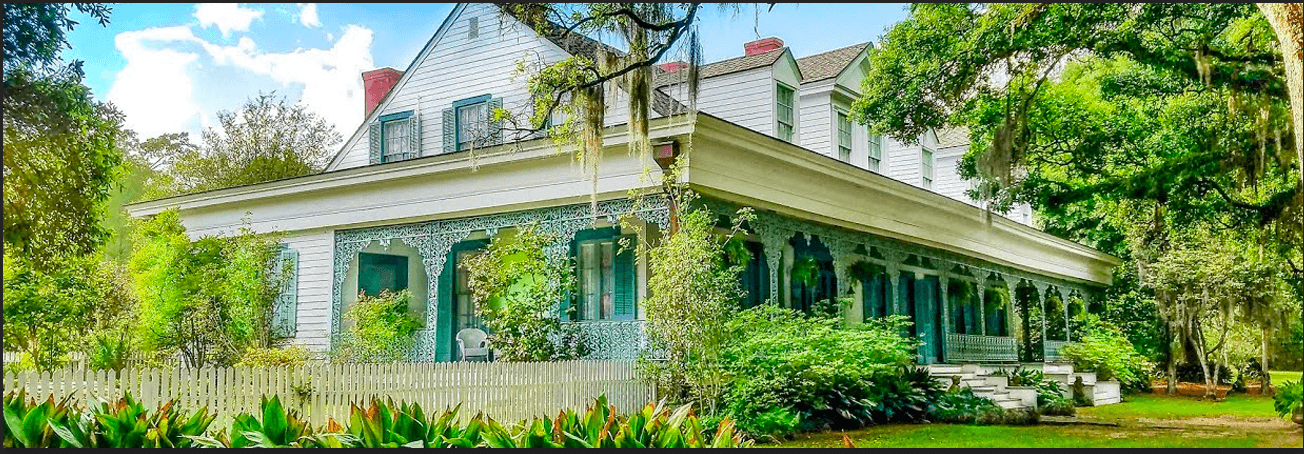
One of the most infamously haunted places in America, Myrtles Plantation has stood as a reminder of a dark part of US history. This is not a story with a happy ending, unfortunately, as the ghosts of the Myrtles are enslaved in the afterlife. Today, with a heavy heart, we cover the chilling tales of a plantation in Louisiana, and those who were forced to work there and never left.
The home is a traditional antebellum home, complete with 20 rooms, a wrap-around veranda, and majestic columns. The original home was built back in 1796 and in the 1850s, it was expanded to the sprawling home we see today. The plantation was originally known as Laurel Grove, so named by the first owner of the property and the eventual home that would become the iconic structure we see today. Over the years, it operated as a plantation, a school, and now as a bed and breakfast, complete with a gift shop in the oldest structure on the grounds, the General’s Store, so named for the original owner, General Bradford.

General Bradford has a hand in the infamous Whiskey Rebellion in Pennsylvania and moved south to escape persecution. He lived alone on the grounds for years before President John Adams pardoned him for his role in the rebellion. He would then move his wife, Elizabeth and their children to the plantation. He would be called out again in the war of 1812, this time serving with Andrew Jackson in Louisiana.
Mr. & Mrs. Clarke Woodruff would be the next caretakers of the plantation, and they would rename it “The Myrtles,” because of the giant myrtle trees that grew on the property. During this entire period, the plantation kept enslaved people on the property, with slave quarters built on the giant property.

One story about the myrtles that has become infamous is that of Chloe and the green scarf. It’s said that Chloe was a servant in the home, making meals and keeping the giant mansion clean during her years there. It’s said that Chloe was brutally treated by Mr. Woodruff, even being alleged to have had an affair with her, at the time, master. Legend says that she poisoned a birthday cake and killed two of the woodruff’s children and Mrs. Woodruff herself. The anger of her fellow enslaved people led to them lynching her on one of the myrtle trees.

It’s worth mentioning, however, that plantations kept detailed records of the enslaved people on their land, viewing them as assets and property. There is no mention of any woman enslaved on the plantation known as Chloe and even more damning to the legend, the Woodruff’s children died of yellow fever, not a poisoned birthday cake. Scholars have wondered what this story portrays about the plantation, being that most of the legend is verifiably false, with one suggestion being that it was a tale told to keep the other slaves on the plantation in line and so they would know the punishment for any harm that came to the “master’s” family.
Regardless of the story, one of the most famous ghost photos of the Myrtles depicts a black woman with a green headscarf that was reported to be the vengeful ghost of Chloe. The plantation has no shortage of haunting events and tales to explain the haunting of what is known as the most haunted home in America.

Reports say there are as many as 12 ghosts haunting the plantation, with more legends saying no less than 10 murders occured on the grounds. Men have been shot point-blank on the property, causing their death, and even more were said to have been murdered in a fit of hysteria by owners of the home in the later part of the antebellum period. A man named William Winter, an attorney living on the grounds in 1865, was murdered brutally and his murder was never solved. He crawled towards the staircase as he was dying and passed away on the 17th step. Visitors to the myrtles say that they can still hear the heavy footsteps of William’s last ascension.
Ghostly reports say these apparitions are common to see at Myrtles, with the most famous spirit still being the one of Chloe in her green headscarf, reportedly seen all over the property. A giant mirror that stands in the hallway is said to reveal the ghosts of the Woodruff children, who would appear behind one gazing in the mirror, only to disappear when they turned around. When moving or cleaning the mirror, small handprints seem to appear out of nowhere on the mirror. Figures and white mists can be seen all over the property, often disappearing just as quickly as they appeared.

While the truth of some of the hauntings can be debated, there’s no debate as to whether there is paranormal activity happening in the home, with haunting tragedies and the enslavement of human beings, the grief in the home is palpable. Today, the plantation runs as a bed and breakfast and leans into its reputation as one of the most haunted places in the south. If you’re brave enough, you can stay the night and see if the legends are true, or at least enjoy a vacation with history to be revered.
- About the Author
- Latest Posts

Born in Death Valley and raised on the prairie, Deborah is a Wyoming-based paranormal researcher and University of Wyoming graduate. Her interests lie in folklore, history, symbolic interaction and research. She also researches the paranormal academically and is a graduate student studying sociology.


